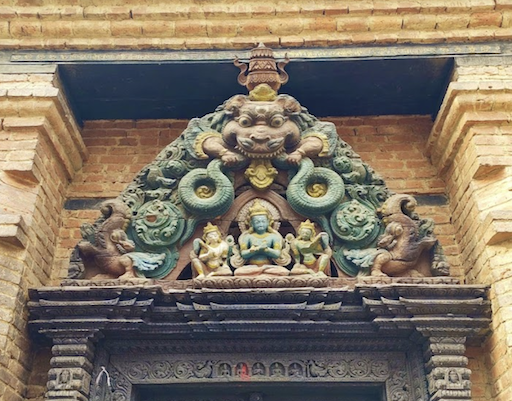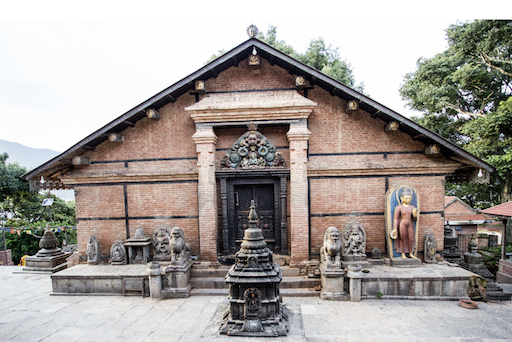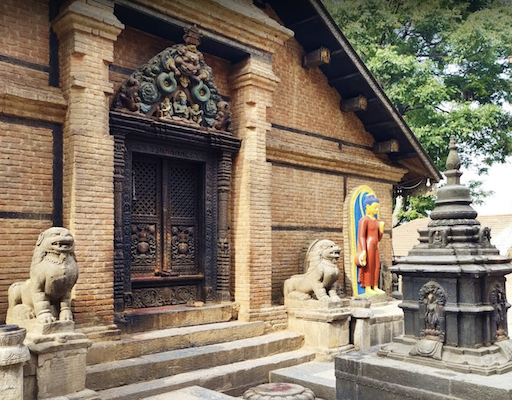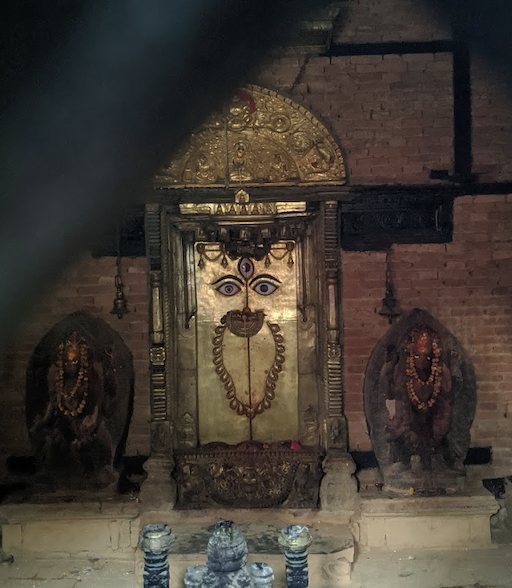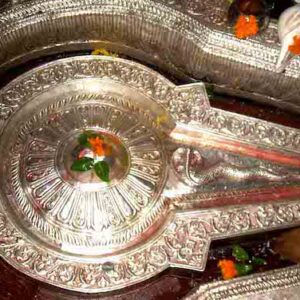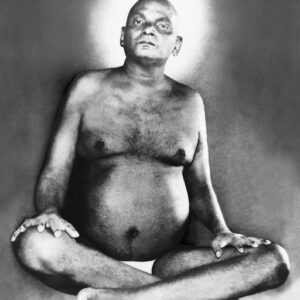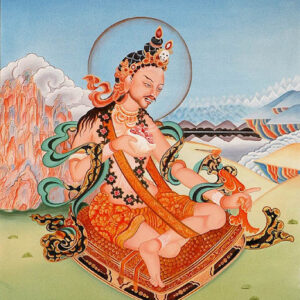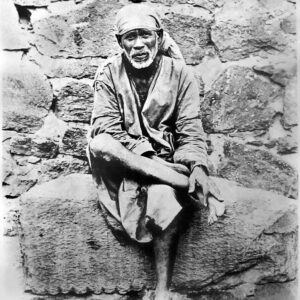This is a Samadhi of Shantikar Acharya, who is said to still meditate underground for more than 1500 Years.
You cannot enter the temple beyond the first gate which is also accessible only during full moon nights. But there is a place to sit and meditate outside the temple. You can go into meditative states here effortlessly.
How to get there
Shantipur is 1 minute walk north of Swayambhunath Mahachaitya. Swayambhunath is located on the eastern side of Kathmandu Valley next to ring road.
Map: https://goo.gl/maps/cb8pZnNA6c6dQZrRA
About Shantikar Acharya, First Vajracharya of Newar Buddhism
The inconspicuous temple of Shantipur, “City of Peace,” is located on the north side of Swayambhu Hill. Shantipur is regarded as the most sacred and secret of all the esoteric shrines of Newar Buddhism. Dedicated to Chakrasamvara, it is said to cover the entrance to an underground network of rooms that connects with the hidden inner core of the Swayambhu Stupa. The first Vajracharya of Newar Buddhism, the tantric master Shantashri or Shantikar Acharya, is believed to still reside in these caves to this day, in a rainbow body or as a Chakrasamvara icon. No one is allowed to enter the temple other than vajracharya priests, although visitors are permitted to enter as far as the porch.
King Prachanda Dev becomes Shantikar Acharya to protect Swayambhu Dharmadhatu
It was when King Prachanda Dev was meditating on the Vajrakuta Parvata, Manjushri appeared to him, and explaining that in the next era, the Kali Yuga, it would be difficult to preserve the Swayambhu Dharmadhatu, he instructed the king to build a stupa to cover and protect it. Accordingly the king took the Vajracharya ordination as a necessary prerequisite for building the stupa and was thereafter known as Shantikar Acharya.
Then he covered the Swayambhu Dharmadhatu with a precious stone and built a stupa with the images of the five tathagatas around it. He also built the temples of the five elements Vayupur, Vasupur, Agnipur, Nagpur, and Akasapur (Currently known as Shantipur), and retired to the Akasapur Temple to meditate. It is said that he is still there in samadhi, in one of the lower rooms of that temple.
1500 Years and Counting
Northwest of the main stupa is another important shrine known as Shantipur. It is also called Akashpur (Sky Place) which represents the fifth element and has a fascinating legend. It looks like a simple structure but it carries huge cultural importance. This pur is made as a sky element so it is named ‘Samwarpur‘ and later ‘Santipur‘. This pur is popular by the name of Shantikar Acharya who requested king Gunakamdev to build Swayambhu. Shantikar was a king named Prachanda dev before he became saint. He came here on a pilgrimage and later became saint practicing various tantras.
Shantipur a box shaped temple is a place where it is believed to be a underground chamber. Here, you’ll feel different vibes, mysterious atmosphere when you enter this temple infront of the door to the underground chamber. It’s a secret place which is always locked and concealed, door to the underground chamber. It is believed that immortal Shantikar Acharya lives in this underground chamber doing meditation. He is the 8th century Tantric master who is believed to be in a mystic living state from many centuries with his tantric powers.
It is said that Shantikar Acharya has locked himself in a underground chamber since 5th century and vowed to remain inside until he is needed by the people of Kathmandu. He has been there for 1500 years and has the power over the weather. Before he went into Shantipur he said “I’ll come out only when there will be no Buddhist in Kathmandu valley”. It is believed that when there is no rain in Kathmandu, the King must enter the underground chamber and Shantikar will give a secret mandala. This mandala needs to be brought outside of the temple and shown to the sky then rain begins to fall. Frescoes painted on the inside temple walls depict when last this occurred in 1658.
Read More
https://www.nekhor.org/padmasambhava/nepal/swayambhu
https://fpmt.org/mandala/archives/older/mandala-for-1987/october/secrets-of-the-kathmandu-valley/
http://www.swayambhunath.com/shantipur/
